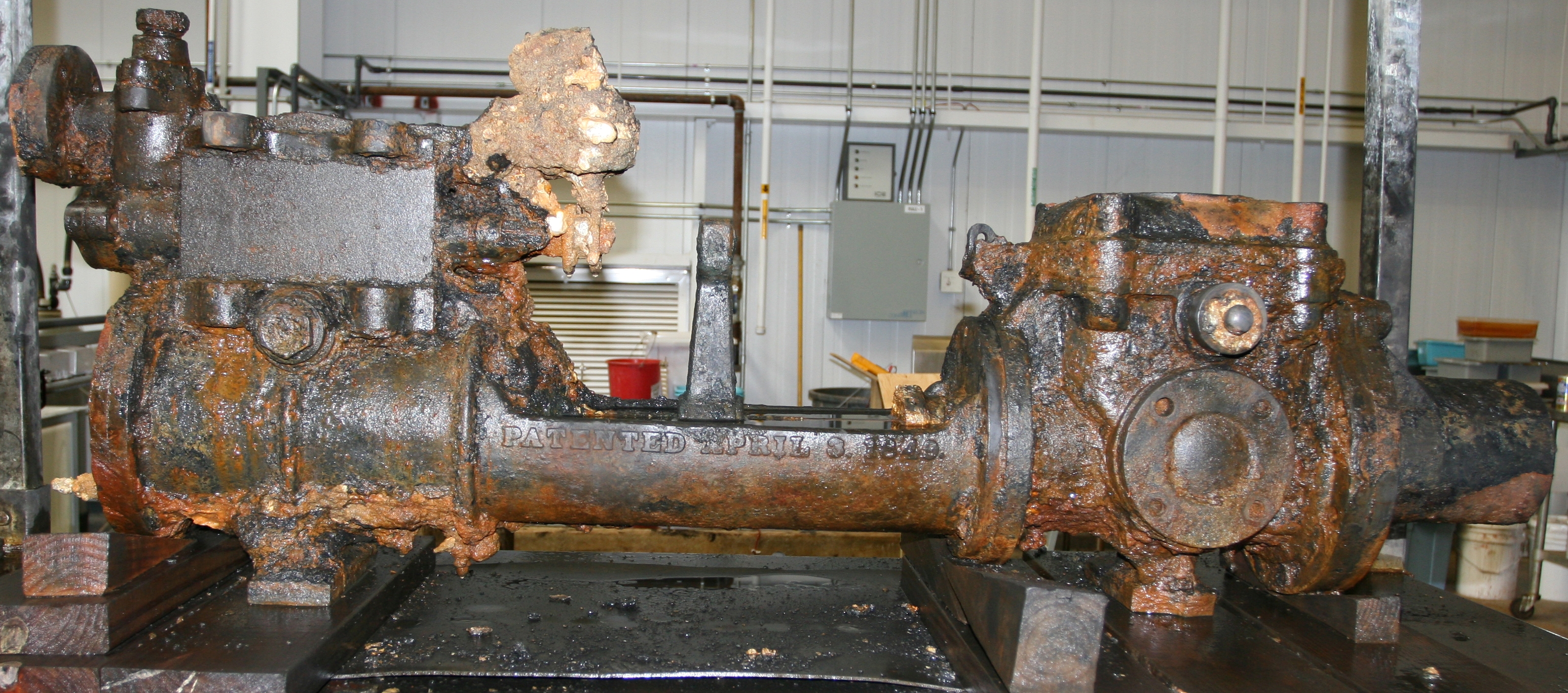Worthington Steam Pumps Named Historic Engineering Landmark
Worthington Steam Pumps Named Historic Engineering Landmark
NEW YORK, New York, Aug 26, 2016 – The Worthington steam pumps installed on the famous Civil War vessel Monitor and which became the gold standard for water pumps in the ensuing years of growing industrialization in the United States, has been cited for historic significance.
The pumps, the earliest known surviving direct-acting steam pumps, was declared a historic mechanical engineering landmark by The American Society of Mechanical Engineers (ASME) at a designation ceremony held Aug. 25, 2016, at the Mariner’s Museum and Park in Newport News, Va.
“The Worthington steam pumps stand apart for their efficiency and reliability,” said Reginald Vachon, former president of ASME, who presented a bronze plaque to officials of the Mariner’s Museum at the Aug. 25 ceremony. “Their compact size and lightweight design are vital features in marine applications, and the pumps also serve as the basis for a variety of other industrial applications.”
Simple in design yet efficient, Worthington’s duplex steam pumps featured no rotating mechanical parts, consisting only of dual steam cylinders providing power to two pumping cylinders, with each power and pump piston mounted on a common piston rod.
The Worthington Pumping Engine Company was established in 1885 to build quality steam pumps for ships and larger systems for municipal water works.
“Landmark status for the Worthington steam pumps recognizes the contribution of the steam pumps to industrial history and to the progress of mechanical engineering,” said K. Keith Roe, current president of ASME. “The Worthington steam pumps join a roster of more than 260 other ASME engineering landmarks throughout the world. Each represents a progressive step in the evolution of our profession, while exemplifying the innovation and vision personifed in engineers everywhere.”
About ASME
ASME helps the global engineering community develop solutions to real world challenges. Founded in 1880 as the American Society of Mechanical Engineers, ASME is a not-for-profit professional organization that enables collaboration, knowledge sharing and skill development across all engineering disciplines, while promoting the vital role of the engineer in society. ASME codes and standards, publications, conferences, continuing education and professional development programs provide a foundation for advancing technical knowledge and a safer world. For more information visit www.asme.org
ASME Media Contact:
Deborah Wetzel
Manager, Media Relations
wetzeld@asme.org
212.591.7085



.png?width=854&height=480&ext=.png)
